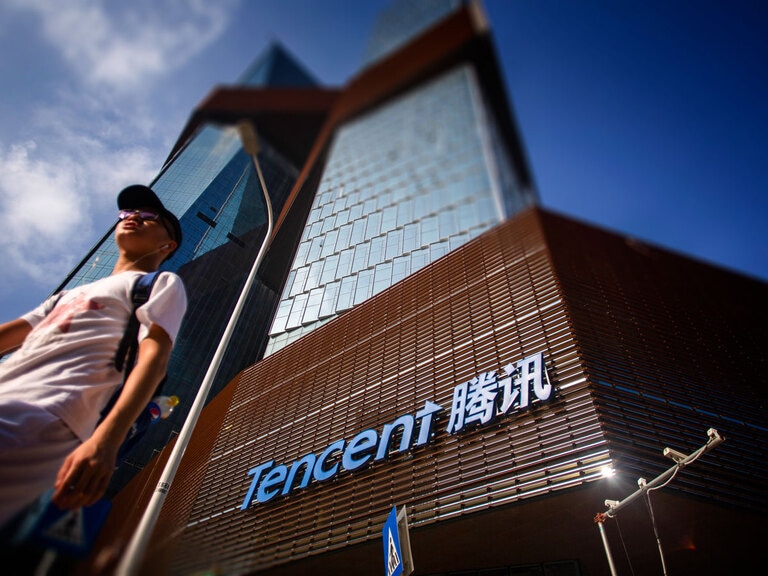While tech stocks have taken a hit in 2022, cybersecurity stocks are increasingly emerging as assets with both growth and defensive qualities. Earnings beats and record revenues from Cisco Systems and Palo Alto have supported this bullish view for the industry.
- Cisco and Palo Alto Networks report record revenues
- Earnings beats support emerging view of cybersecurity stocks as defensive assets
- The First Trust Nasdaq Cybersecurity ETF has outperformed Nasdaq in 2022
Cisco [CSCO] and Palo Alto Networks [PANW] have maintained solid business performance in the face of 2022’s headwinds, which have delivered a hammering to most tech stocks.
Despite a rotation away from growth stocks as macro conditions worsened, businesses across all major sectors have maintained their budgets for cybersecurity spend. With data increasingly stored on cloud networks and servers, companies have had little choice but to protect themselves from security breaches.
Cisco’s share price fell 24.2% in the year-to-date (through 18 November), while Palo Alto’s fell 15.6% over the same period. Both stocks have outperformed the Nasdaq Composite, which has fallen 28.8%.
Palo Alto is a pure-play cybersecurity stock, whereas Cisco has a substantial amount of its business rooted in hardware. This side of Cisco’s business is down roughly 30% this year, thanks to reduced demand for networking supplies and inflated production costs.
Cisco and Palo Alto see record revenue
In the fourth quarter of 2022, Palo Alto posted the highest sales figure in its history of $1.55bn, beating analyst estimates of $1.54bn according to Zack’s. However, Palo Alto exceeded that figure again in its recent reported earnings for the first quarter of 2023, as well as its own top-line guidance, reporting revenues of $1.6bn after markets closed on 17 November. Non-GAAP net income per diluted share of $0.83 came in 22.1% higher than analysts’ consensus figure of $0.68, according to a poll by Zack’s. Top-line revenue guidance for FY 2023 was revised upwards from $6.90bn to $6.91bn.
The report followed hot on the heels of Cisco’s, delivered the previous day. Cisco reported its highest ever quarterly revenue of $13.6bn, beating the consensus estimates of analysts polled by the Financial Times by 2.4%. Non-GAAP EPS of $0.86 per share marked a 5% year-over-year increase and was 2.4% above analyst expectations.
Cisco also anticipated fiscal year revenue to increase 4.5% to 6.5% year-over-year, a 50bps increase on the 4% 6% growth forecast in its previous report.
A defensive theme
One major tailwind for Cisco and especially Palo Alto is a growing view among analysts and investors that cybersecurity stocks are defensive, rather than cyclical. Despite still being considered growth stocks, the need for businesses to spend on cybersecurity remains during a recession, and as such these stocks could see better retention and resilience over the coming months and years than other tech stocks.
“Within enterprise budgets, security is the last area businesses will cut,” Ivana Delevska, chief investment officer at Spear Invest, recently told Bloomberg, “so growth should continue even if we see a recession.”
Cisco’s chair and CEO Chuck Robbins hailed Cisco’s diverse product portfolio in the company’s recent results, stating that they “demonstrate the relevance of our strategy, our differentiated innovation, and our unique position to help our customers become more resilient." Cisco’s security division’s sales revenue was up 9% in the results.
Meanwhile, Palo Alto’s chair and CEO Nikesh Arora attributed the company’s growth to “customers continuing to increase their commitments to [Palo Alto’s] security platforms.”
Funds in focus: First Trust Nasdaq Cybersecurity ETF
Thanks to this emerging enthusiasm for cybersecurity stocks, the First Trust Nasdaq Cybersecurity ETF [CIBR] has outperformed the Nasdaq in 2022 by more than four percentage points, falling 24.3% in the year to 18 November. CIBR holds Cisco and Palo Alto as its third and fourth holdings, with weightings of 6.30% and 5.44%, respectively, as of 16 November. Palo Alto’s performance over that period makes it the top performer in the fund’s top five stocks, while number six, Science Applications International Corporation [SAIC], gained 28.4% over the same period.
Analysts polled by the Financial Times anticipate an average of 11.6% upside over Cisco’s current share price over the coming 12 months, with a median price target of $52. They are more bullish about Palo Alto, with a median price target of $217representing 38.6% upside. 16 out of 29 analysts covering Cisco gave the stock a Hold rating, while 24 out of 42 of those covering Palo Alto rated the stock ‘outperform’.
Disclaimer Past performance is not a reliable indicator of future results.
CMC Markets is an execution-only service provider. The material (whether or not it states any opinions) is for general information purposes only, and does not take into account your personal circumstances or objectives. Nothing in this material is (or should be considered to be) financial, investment or other advice on which reliance should be placed. No opinion given in the material constitutes a recommendation by CMC Markets or the author that any particular investment, security, transaction or investment strategy is suitable for any specific person.
The material has not been prepared in accordance with legal requirements designed to promote the independence of investment research. Although we are not specifically prevented from dealing before providing this material, we do not seek to take advantage of the material prior to its dissemination.
CMC Markets does not endorse or offer opinion on the trading strategies used by the author. Their trading strategies do not guarantee any return and CMC Markets shall not be held responsible for any loss that you may incur, either directly or indirectly, arising from any investment based on any information contained herein.
*Tax treatment depends on individual circumstances and can change or may differ in a jurisdiction other than the UK.
Continue reading for FREE
- Includes free newsletter updates, unsubscribe anytime. Privacy policy





